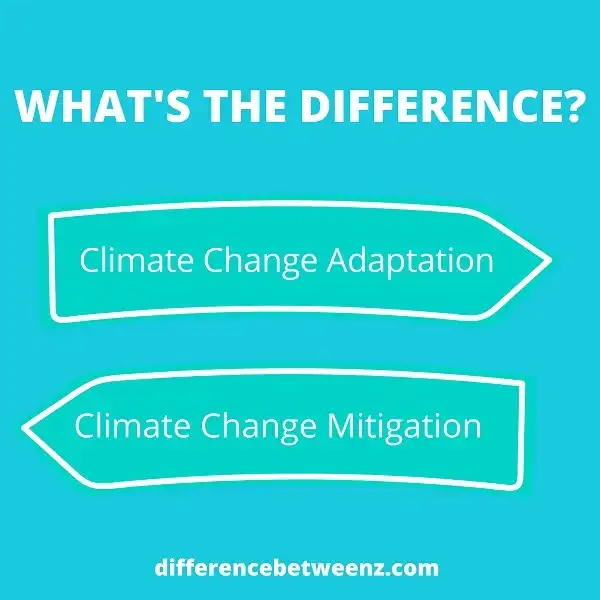Climate change poses a growing threat to our environment and humanity, but there are strategies that can help us adapt and mitigate these impacts. Understanding the difference between adaptation and mitigation is essential for developing effective climate-change responses. In this blog post, we will investigate what adaptation and mitigation mean in the context of climate change, explore their implications for society, and discuss how both approaches can be used to protect ourselves from global warming’s dangers.
What is Climate Change Adaptation?
Climate Change Adaptation is a process that helps humans and nature adjust to the changes resulting from Climate Change. It requires us to transform our behavior, infrastructure, and environment in order to reduce our own vulnerability and increase our capacity to respond and thrive under Climate Change conditions.
- Climate Change Adaptation focuses on reducing the risks posed by Climate Change while preparing communities, societies, and ecosystems for future Climate Changes.
- It also works to capitalize on opportunities presented by Climate Change, such as utilizing new crop varieties that are more resilient against extreme weather events or too-warm temperatures.
- Climate change adaptation can include activities from policy development and sustainable agriculture practices, to early warning systems for disaster risk reduction.
Ultimately, Climate Change Adaptation is about resilience in the face of Climate Change, ensuring our societies and environment are able to sustain their recovery abilities with minimum damages in the long term.
What is Climate Change Mitigation?
Mitigation of climate change is a key concept in sustainable development and sustainability. Mitigation involves reducing emissions of greenhouse gases, such as carbon dioxide, as well as investing in strategies to both reduce future emissions and increase the ability to adapt to current climatic changes.
- Mitigation strategies look to dramatically reduce emissions by improving energy efficiency, renewable energy sources like solar and wind, better land use practices such as reforestation or crop rotation, and moving away from burning fossil fuels.
- Mitigation can also include increasing the resilience of communities to existing climate variations using early-warning systems for extreme weather events and adaptation measures that are aimed at strengthening existing infrastructure.
- Mitigation is essential to ensure long-term societal survival faced with the potential effects of global warming caused by human activities on top of climate variability.
Difference between Climate Change Adaptation and Mitigation
Climate Change Adaptation and Mitigation are two distinct but related areas of study when considering ways to address human-induced Climate Change. Climate Change Adaptation focuses on how humans can make changes to their behavior in response to Climate Change, for example building sea walls or developing drought-resistant crops to deal with the effects already being experienced. Climate Change Mitigation, on the other hand, is about taking steps to reduce future Climate Change by reducing industrial emissions, enhancing carbon sinks like forests, or introducing renewable energy sources. Both Adaptation and Mitigation are necessary if we hope to avoid the worst consequences of Climate Change.
Conclusion
Climate change adaptation and mitigation are two very important terms in the field of environmentalism. Climate change adaptation is defined as “the process by which a natural or human system adjusts to new climatic conditions, thereby moderating potential damages, constraining adverse impacts, taking advantage of opportunities, or cope with the climate change effects” while mitigation is “any action that reduces greenhouse gases emissions.” Both processes are essential in order to combat climate change and its various effects on both the environment and society as a whole.


